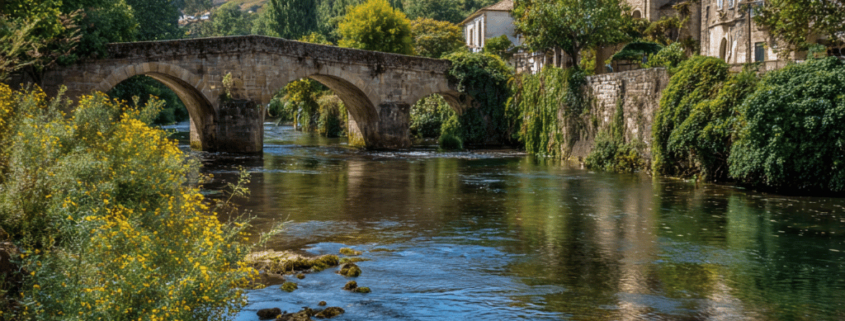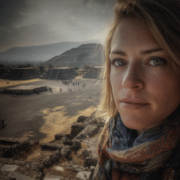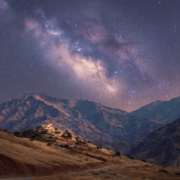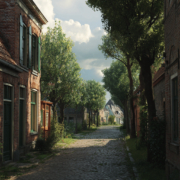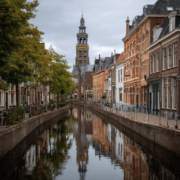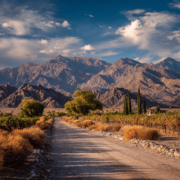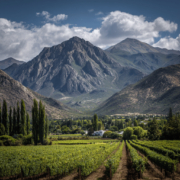Discover The Life-Changing Magic of Spain’s Ancient Camino: A Pilgrim’s Guide to Santiago de Compostela
As one sets foot on the ancient cobblestone streets of Santiago de Compostela, it’s impossible not to feel a profound sense of awe and wonder. This historic city, nestled in the heart of Spain, stands as both a UNESCO World Heritage Site and the final destination of the legendary Camino de Santiago pilgrimage trail.
Walking along the same path that millions of pilgrims have traversed for centuries, travelers often discover a sense of peace and tranquility that seems increasingly elusive in our fast-paced modern world. The journey becomes more than mere movement—it transforms into a meditation in motion, a dialogue between past and present.
The Transformative Power of Pilgrimage
For those seeking to maximize their travel experience in Santiago de Compostela, embarking on the Camino de Santiago pilgrimage trail offers an unparalleled opportunity for transformation. Whether choosing to walk the entire 500-mile route or just a meaningful portion of it, the journey invariably becomes life-changing.
Along the way, pilgrims have extraordinary opportunities to connect with fellow travelers from around the world, creating bonds that often transcend cultural and linguistic barriers. These chance encounters frequently become the most treasured memories of the entire journey, proving that the Camino’s magic lies not just in its destination, but in its community.
Reconnecting with Nature and Self
One of the most compelling aspects of walking the Camino de Santiago is the rare opportunity it provides to disconnect from the constant distractions of everyday life. In our hyperconnected world, the trail offers a precious chance to reconnect with nature and oneself.
The route winds gracefully through:
- Picturesque medieval villages frozen in time
- Lush forests that whisper ancient stories
- Rolling hills that stretch toward infinite horizons
- Sacred spaces that have welcomed pilgrims for centuries
This diverse landscape creates a peaceful and meditative environment perfectly suited for reflection and introspection. Whether seekers come pursuing spiritual enlightenment, physical challenge, or simply respite from modern life’s relentless pace, the Camino offers something profound for everyone.
Essential Tips for Success
Beyond the spiritual and personal growth achievable through walking the Camino, several practical considerations can significantly enhance the journey’s success and enjoyment.
Physical Preparation:
- Pack light – every ounce matters over hundreds of miles
- Invest in comfortable, well-broken-in shoes – your feet will thank you
- Stay consistently hydrated – dehydration can quickly derail progress
- Build endurance gradually before attempting longer sections
Cultural Immersion:
- Savor the local cuisine – each region offers unique specialties
- Interact with friendly locals – their stories often become journey highlights
- Learn basic Spanish phrases – even simple greetings open doors
- Embrace the slow pace – rushing defeats the Camino’s purpose
A Journey Beyond Physical Boundaries
The experience of walking the Camino de Santiago in Santiago de Compostela consistently proves to be genuinely unforgettable. Whether undertaken by seasoned pilgrims or first-time travelers, this journey offers something that transcends typical tourism.
The Camino de Santiago reveals itself as far more than a physical trail—it becomes a spiritual and emotional pathway as well. This unique combination offers an extraordinary opportunity for personal growth and self-discovery that continues long after the final steps are taken.
As pilgrims approach the magnificent cathedral that marks their journey’s end, many report feeling not completion, but rather commencement—the beginning of a new chapter informed by the wisdom gained along ancient paths. The cobblestones of Santiago de Compostela don’t just mark a destination; they represent a transformation, a return to something essential that modern life often obscures.
In a world increasingly defined by speed and digital connections, the Camino de Santiago offers something revolutionary: the chance to move slowly, think deeply, and discover that sometimes the most important journeys are measured not in miles covered, but in insights gained along the way.

